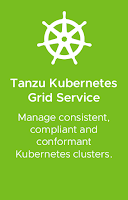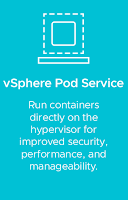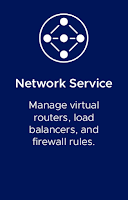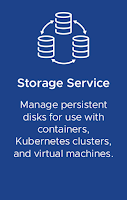Kubernetes and what have done in the vSphere suite
In every modern IT environment that has a fully integrated and centneralized infrastructure, it's very usual all users demand for 24x7 access to each of organizational applications and also request for newer versions of them. Fortunately because of web-based structure of today applications, especially in front-end services, it's easier more than old time to upgrade and import recent changes to provide new version of that software with lowest level of downtime or service interruption. Container is a new technology for achieving this goal and answer to these needs.
Similar to the virtual machine architecture that runs as a independent process inside the host, packaged applications (source code and its required files and all other dependencies) can be run as the independent apps in the container architecture.
 If I want to simply define, the Container is a package software include the source codes and all of its requirement and dependencies to run the application without any hardware or software limitation. The Docker is a platform for running containers, similar to the hypervisor for running virtual machines. But the Kubernetes provide an environment for managing the containers.
If I want to simply define, the Container is a package software include the source codes and all of its requirement and dependencies to run the application without any hardware or software limitation. The Docker is a platform for running containers, similar to the hypervisor for running virtual machines. But the Kubernetes provide an environment for managing the containers.Kubernetes is a great open-source platform written on Golang and developed by Google lab and then CNCF (Cloud Native Computing Foundation) for management and orchestration of Containers. It's also a better methods of improving the IaaS performance and feedbacks in any enterprise environment.
in VMworld 2019 VMware announced Project Pacific. It's about the integration of Kubernetes with vSphere, in other word changing the vSphere architecture with the native Kubernetes. By using of Kubernetes clusters inside the vSphere platform that are provisioned and managed via Tanzu Kubernetes Grid, a mutation occurred in the application provisioning. So it's a great gift for the application developers and virtual infrastructure administrators. This great idea has unbelievable results that lead to introducing
VMware vSphere 7.
By release of vSphere 7, VMware shows how this incredible virtualization management platform will be more powerful by integration with the Kubernetes . VMware announce it's the biggest innovation since the launch of the ESXi.
Many problems and limitation of traditional application proviosioning have been satisfying with the virtualization technology. So the VMware wants to continue journey of this long story to the modern hybrid could for greater integrity and better flexibility of datacenter application management via the VMware Cloud Foundation (VCF). "vSphere 7 with Kubernetes" helps administrators to focus on the most efficient organizational application management and service delivery. Also developers via many Restful APIs can use this unified management and hyperconverged infrastructure (HCI) for greater developing of modern structure of those application and also easier renewal version. At last it will lead to the most availability factor and ease of access to the apps and also simplifying their lifecycle management.

By release of vSphere 7 and fully integration with Kubernetes, it's possible to provide API access to all core services in each layers of modern datacenter structure and hybrid cloud architecture. Then it cause the VMware Cloud Foundation services to be powerful more than ever. There are many other new feature inside the vSphere 7 that are involved with the Kubernetes technology, include Hybrid Infrastructure Services like the vSphere Pod Service (an isolated and secure VM acts as a configurable pod) and Virtual Machine service (Managing App and its VM and Container through Kubernetes.
By release of vSphere 7, VMware shows how this incredible virtualization management platform will be more powerful by integration with the Kubernetes . VMware announce it's the biggest innovation since the launch of the ESXi.
Many problems and limitation of traditional application proviosioning have been satisfying with the virtualization technology. So the VMware wants to continue journey of this long story to the modern hybrid could for greater integrity and better flexibility of datacenter application management via the VMware Cloud Foundation (VCF). "vSphere 7 with Kubernetes" helps administrators to focus on the most efficient organizational application management and service delivery. Also developers via many Restful APIs can use this unified management and hyperconverged infrastructure (HCI) for greater developing of modern structure of those application and also easier renewal version. At last it will lead to the most availability factor and ease of access to the apps and also simplifying their lifecycle management.

By release of vSphere 7 and fully integration with Kubernetes, it's possible to provide API access to all core services in each layers of modern datacenter structure and hybrid cloud architecture. Then it cause the VMware Cloud Foundation services to be powerful more than ever. There are many other new feature inside the vSphere 7 that are involved with the Kubernetes technology, include Hybrid Infrastructure Services like the vSphere Pod Service (an isolated and secure VM acts as a configurable pod) and Virtual Machine service (Managing App and its VM and Container through Kubernetes.

 While the Networking layer (like NSX as the SDN) and Storage layer (like VSAN as the SDS) are two primary underlyings of the SDDC architecture, Kubernetes with RESTful API provide Hybrid Infrastructure Services to create and change VM, Container, Network, Storage and so on.
While the Networking layer (like NSX as the SDN) and Storage layer (like VSAN as the SDS) are two primary underlyings of the SDDC architecture, Kubernetes with RESTful API provide Hybrid Infrastructure Services to create and change VM, Container, Network, Storage and so on. As the final conclusion vSphere 7 with Kubernetes make the following advantages in IT administrator area:
- Acceleration in software renewal and upgrading operations in form of software packages called Containers.
- Faster application deployment (for developers) and greater service accessibility (for users and IT operators) to ensure more availability rate.
- Intrinsic immunity of Container based organizational application that lead to increase rate of datacenter security.
- Simplifying management operations and higher flexibility and agility in cloud services.
- Reduce cost of application deployment and saving IT budget.





Comments
Post a Comment